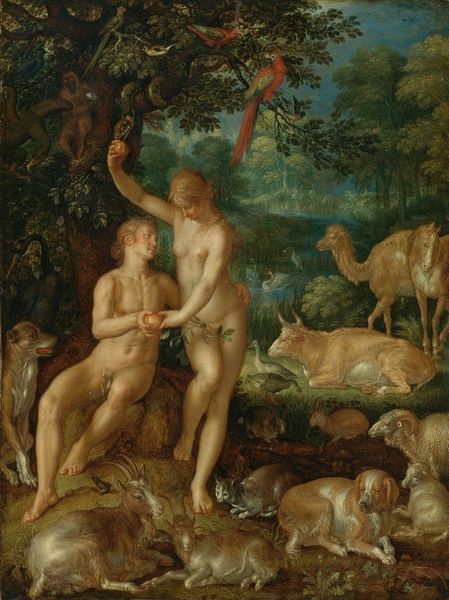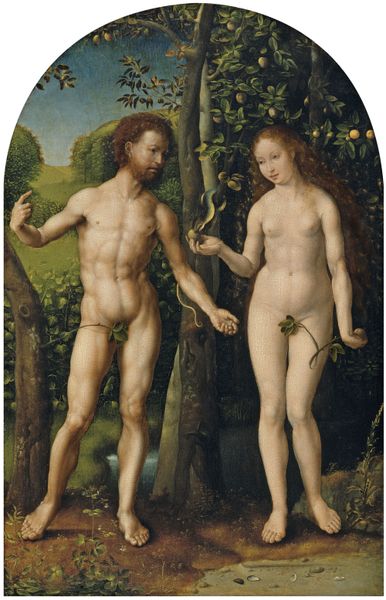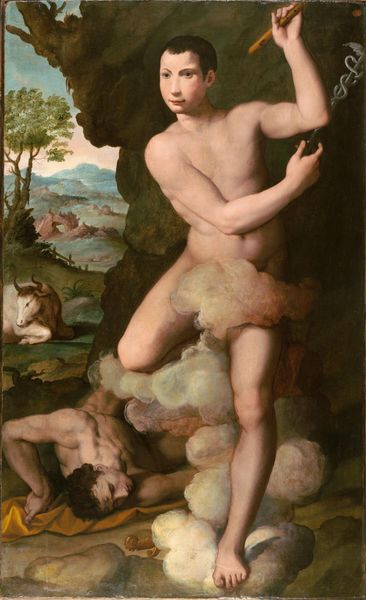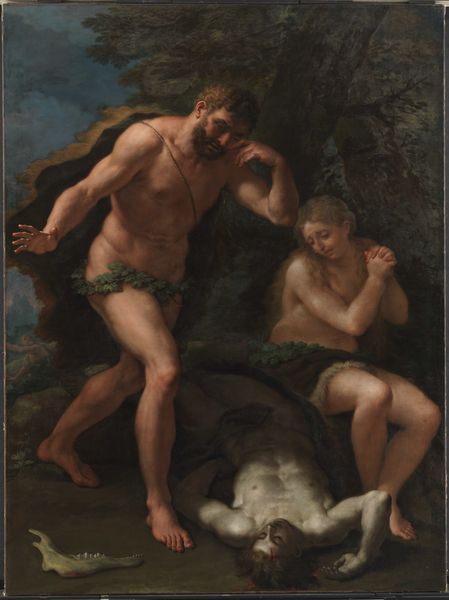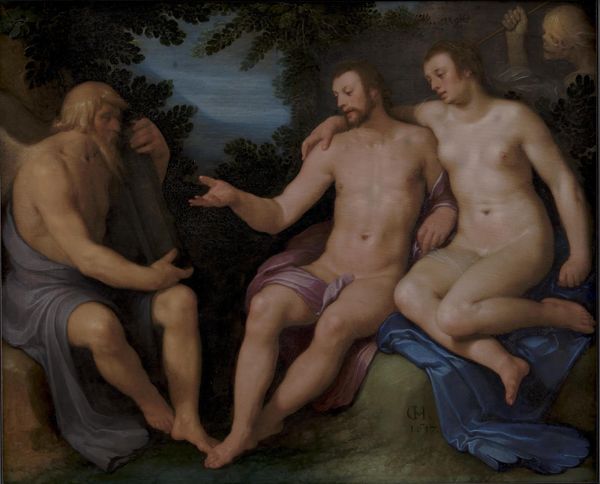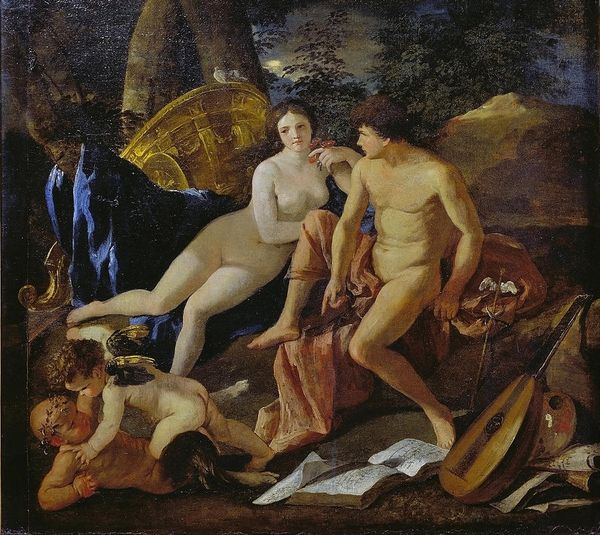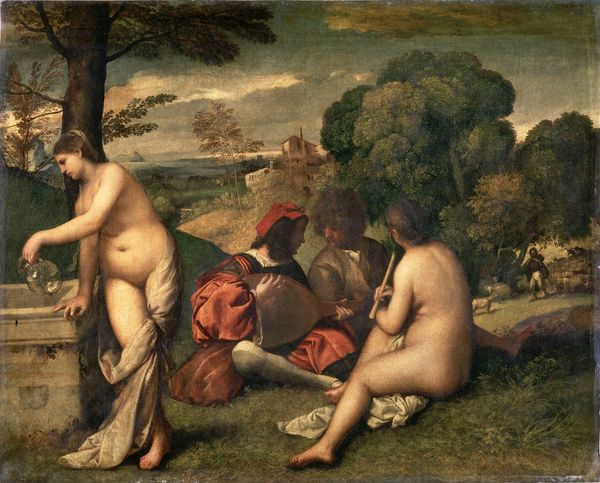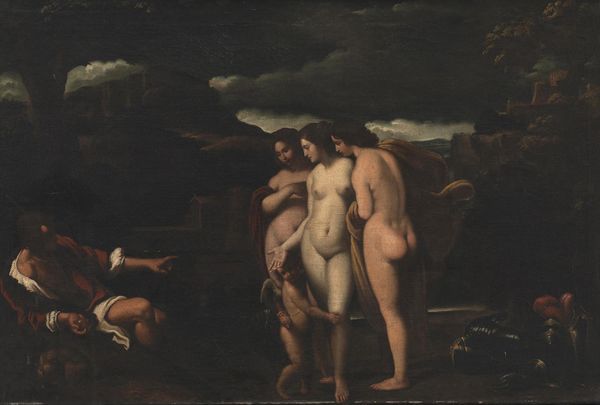
painting, oil-paint
#
allegory
#
painting
#
oil-paint
#
landscape
#
charcoal drawing
#
mannerism
#
figuration
#
oil painting
#
history-painting
#
nude
#
realism
Dimensions: height 273 cm, width 220 cm
Copyright: Rijks Museum: Open Domain
Curator: Looking at Cornelis Cornelisz van Haarlem’s rendition of “The Fall of Man,” created in 1592, the first thing that strikes me is its rather robust figuration. It's definitely not what I expect from depictions of this scene. Editor: Indeed! The muscularity, almost theatrical posing. This piece visually echoes the power dynamics within a patriarchal interpretation of the original sin narrative. The exaggeration seems designed to convey Adam and Eve's supposed moral failings. It highlights gender and the subjugation of the female form. The dog—symbol of fidelity and loyalty—seems like it could easily serve as a representation of male ownership over land, animals, and even the female body. Curator: Yes, note also the compositional arrangement, how their linked hands seem almost to serve as the focal point and draw our eye centrally in the work. Editor: Absolutely, this choice emphasizes shared guilt, a concept central to discussions about moral responsibility. Beyond guilt, there is the symbolism of the animals, the inclusion of what appears to be an owl… it is like an allegory of primal instincts, ignorance, and the unleashing of chaos upon a supposedly ideal world. One of innocence. It suggests that innocence is merely a state of unawareness. A fall is an inevitability once we possess knowledge. Curator: Semiotically, consider the contrast in colors – the cool, verdant tones of the landscape backdrop versus the warm, almost glowing flesh of Adam and Eve. I also see they’re situated near the edge of a precipice. That compositional placement makes you really feel a loss, and their separation from the animals and paradise. And consider, too, the lighting—it seems so dramatic, theatrical almost, that really highlights the bodies, their forms, their reactions. Editor: Van Haarlem places this narrative in a tradition of moral instruction through art. The scene serves not just as a depiction but also as a tool for reinforcing contemporary social mores. By focusing on physicality, he amplifies perceived vulnerabilities linked to desire and transgression within the era's social context. There are real, material ramifications for folks across time in narratives like these that continue to reverberate. Curator: Right. It's a deeply layered painting; technically rich, symbolically dense, and historically revealing. I notice something different each time I view it. Editor: Indeed, seeing the interplay between art as a mirror and art as a maker of meaning gives depth and context. I will carry those impressions forward as I leave the exhibition.
Comments
rijksmuseum about 2 years ago
⋮
In the left background we see God (a cloud with a human face and hands) cautioning Adam and Eve. They may eat the fruit of all of the trees, except the tree of ‘the knowledge of good and evil’. Tempted by the serpent (with a human torso), Adam and Eve nevertheless eat the forbidden fruit, for which they were driven from Paradise.
Join the conversation
Join millions of artists and users on Artera today and experience the ultimate creative platform.

